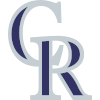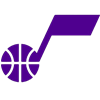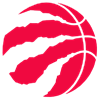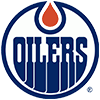Last week, I shared my 25 hitter sleepers, focusing less on the specifics of the players themselves and more on the general categories in which attractive sleepers can be found. This week, we'll repeat the exercise on the pitching side. The requirements here are the same as they were for last week's piece: the players have to have an NFBC ADP later than 300, meaning they're typically available as one of your last three starters or in the reserve rounds in 15-team leagues, and I have to like them enough that I can see myself drafting them somewhere.
I'll break down five of my favorites throughout the article, but the focus will be on what makes pitchers in those categories compelling late picks in general. The goal here is quantity over quality. By definition, it's easier to make the case against any individual sleeper than the case for; if that weren't true, these players would be going much earlier in drafts and would no longer qualify for the label. A bet on any individual sleeper is a bet that the conventional wisdom will turn out wrong. If you're a massive fan of any of these guys, by all means, go get him everywhere, but in many cases, those who play in multiple leagues may want to spread the love around. Most of the time, you'll find you have more control over whether you target the right type of sleeper than whether your pick happens to be the one who
Last week, I shared my 25 hitter sleepers, focusing less on the specifics of the players themselves and more on the general categories in which attractive sleepers can be found. This week, we'll repeat the exercise on the pitching side. The requirements here are the same as they were for last week's piece: the players have to have an NFBC ADP later than 300, meaning they're typically available as one of your last three starters or in the reserve rounds in 15-team leagues, and I have to like them enough that I can see myself drafting them somewhere.
I'll break down five of my favorites throughout the article, but the focus will be on what makes pitchers in those categories compelling late picks in general. The goal here is quantity over quality. By definition, it's easier to make the case against any individual sleeper than the case for; if that weren't true, these players would be going much earlier in drafts and would no longer qualify for the label. A bet on any individual sleeper is a bet that the conventional wisdom will turn out wrong. If you're a massive fan of any of these guys, by all means, go get him everywhere, but in many cases, those who play in multiple leagues may want to spread the love around. Most of the time, you'll find you have more control over whether you target the right type of sleeper than whether your pick happens to be the one who works out.
If your favorite late-round pitcher isn't included below but fits into one of these archetypes, there's a good chance I'm a fan of him as well. Feel free to ask for further thoughts on those players as well as anyone mentioned here who didn't get a deeper dive in the comments below.
Forgettable Back-End Starters
The pitchers in this table generally aren't exciting, but they're varying degrees of perfectly capable. All five finished last season within two points of the league-average strikeout rate (22.4 percent) and within one point of the league-average walk rate (8.2 percent). They also all project to have an Opening Day rotation spot per our depth charts.
| ADP | Player | Team | Age | IP | K | W | ERA | WHIP | K% | BB% | GB% |
|---|---|---|---|---|---|---|---|---|---|---|---|
| 316 | Martin Perez | TEX | 31 | 174 | 143 | 10 | 3.98 | 1.34 | 19.2 | 8.3 | 47.3 |
| 359 | Jose Suarez | LAA | 25 | 132 | 117 | 8 | 4.33 | 1.30 | 20.8 | 7.8 | 42.1 |
| 359 | Kyle Bradish | BAL | 25 | 137 | 126 | 7 | 4.28 | 1.32 | 21.7 | 8.8 | 44.2 |
| 378 | Ken Waldichuk | OAK | 25 | 127 | 124 | 7 | 3.97 | 1.26 | 23.9 | 9.0 | 39.4 |
| 496 | JT Brubaker | PIT | 29 | 156 | 148 | 7 | 4.45 | 1.34 | 22.1 | 8.0 | 43.6 |
ADP data throughout this article is taken from all NFBC Draft Champions Leagues that finished between Jan. 1 and Feb. 16. The stats that populate these tables are ATC projections, published by Ariel Cohen and available at FanGraphs, with the exception of GB%, which comes from Steamer. I've included GB% as well as K% and BB% as a quick way to assess a pitcher's overall skillset.
We're starting with arguably the most boring group, just like last week, but a job and a lack of glaring weaknesses can go a long way. Most of these guys also have pitcher-friendly home parks. The value of this sort of pitcher varies by format, but there are multiple setups in which you might look to this group. In draft-and-hold leagues, you need to be sure you still have at least around six healthy pitchers who still own rotation spots deep into the season if you want to stay competitive in the counting stats. Despite being cheap, these guys have jobs today, and if they pitch well enough that they're still usable late in the second half, they'll keep them all year. AL-Only and NL-Only leagues and very large mixed leagues face a similar pressure to secure a steady supply of usable starts, as virtually every tolerable option is on someone's roster in those leagues, leaving little on the wire.
Since these pitchers by definition post middling strikeout numbers, their value depends in large part on how strikeouts are valued in your league. In old-school leagues that don't use strikeouts, their value obviously rises. In leagues with an easily-reachable innings maximum, however, it's important to think of the strikeout category as secretly a K/9 category in disguise. I'd largely avoid boring but capable starters like these in such leagues, as well as in particularly shallow leagues where the quality of available streaming options is at its highest, though I'd make an exception if I skewed too hard towards volatile high-strikeout arms earlier in the draft.
My Favorite: Jose Suarez - Suarez's overall stat line last season is the epitome of "fine." His 3.96 ERA was good for a park-adjusted ERA- of 100, an exactly average mark, and none of his 22.3 percent strikeout rate, 7.1 percent walk rate or 41.3 percent groundball rate stand out. He had a 5.60 ERA in the first half and a 2.81 ERA in the second, however, and it was backed by a change in his underlying numbers. His strikeout rate remained virtually unchanged, but he posted a 4.2 percent walk rate and 47.8 percent groundball rate after the break. Don't be fooled by the boring final line nor the fact that Suarez debuted back in 2019 and is now entering his fifth season. He's still young, and as his in-season improvement shows, he's still taking steps forward.
Sixth Starters
This one is mostly self-explanatory. In contrast to the previous group, none of these pitchers have guaranteed jobs, as they're all listed sixth in the rotation as of writing. They should still start plenty of games this season; the pitcher who made the sixth-most starts for each MLB club last year averaged 12.7 starts.
| ADP | Player | Team | Age | IP | K | W | ERA | WHIP | K% | BB% | GB% |
|---|---|---|---|---|---|---|---|---|---|---|---|
| 390 | David Peterson | NYM | 27 | 83 | 94 | 5 | 3.65 | 1.27 | 26.8 | 9.9 | 48.1 |
| 392 | Cody Morris | CLE | 26 | 74 | 81 | 4 | 3.65 | 1.23 | 26.5 | 9.1 | 41.5 |
| 488 | Ian Anderson | ATL | 24 | 79 | 71 | 5 | 4.26 | 1.39 | 20.9 | 10.0 | 46.8 |
| 547 | JP Sears | OAK | 26 | 91 | 79 | 5 | 3.86 | 1.26 | 20.7 | 7.7 | 41.4 |
| 691 | Dane Dunning | TEX | 28 | 73 | 66 | 3 | 4.20 | 1.35 | 21.0 | 8.6 | 49.6 |
In some situations, it's almost definitely incorrect to take a pitcher who doesn't line up to break camp as a starter or a closer, but if you're at a spot in the draft where you have enough locked-in starts that you have the luxury of doing so, these pitchers should move up your queue. Don't be alarmed by the fact that they aren't currently in the rotation. Pitchers, unfortunately, get hurt all the time, and they can also lose velocity or command without warning. Opening Day sixth starters like these are very likely to get a run in the rotation at some point, it's just hard to say exactly when.
This archetype has added value in draft-and-hold leagues, provided you've made sure you'll have more than enough guaranteed starts to begin the season, as they can often give an influx of new starts right as your first few starters begin to get hurt. Pitchers in this group who are a lock to at worst begin the year in the major-league bullpen (rather than starting in the minors) have added value in leagues with daily or twice-weekly moves, and in leagues with RP spots if they have or gain eligibility. All of them should give usable innings during their time in the pen in most leagues and should be streaming options at worst when in the rotation.
My Favorite: Dane Dunning - Dunning's underlying numbers took a step back across the board last season, and he's slipped down the depth chart following the Rangers' big offseason additions, but there's no excuse for him to fall so far that he's even going undrafted in some Draft Champions leagues. Even in a down year, his strikeout and walk rates were still respectable enough that he would have qualified for the previous archetype if he were projected to break camp in the rotation. He would have the highest projected groundball rate in that group, as well. And while he's technically a sixth starter today, how much confidence do you have in all four of Jacob deGrom (who may already be hurt), Nathan Eovaldi, Jon Gray and Andrew Heaney holding up until the end of April, let alone the bulk of the season? Assuming Dunning is fully recovered from September hip surgery, he might be one of the biggest bargains out there in deep formats.
Fast-Moving Prospects
These are perhaps the most traditional sleepers in this article. All of them are top-50 prospects per James Anderson. None has made more than 10 starts at the Triple-A level, and Painter, Perez and Tiedemann haven't even pitched above Double-A. All are expected to debut this season, however, and that debut could come very soon if they convince their teams this spring that they're ready.
| ADP | Player | Team | Age | IP | K | W | ERA | WHIP | K% | BB% | GB% |
|---|---|---|---|---|---|---|---|---|---|---|---|
| 334 | Andrew Painter | PHI | 19 | 81 | 78 | 5 | 4.32 | 1.26 | 22.9 | 7.7 | 38.5 |
| 392 | Brandon Pfaadt | ARI | 24 | 47 | 43 | 3 | 4.25 | 1.23 | 22.3 | 6.3 | 37.3 |
| 470 | Bobby Miller | LAD | 23 | 29 | 28 | 2 | 3.94 | 1.22 | 23.4 | 7.1 | 45.5 |
| 535 | Eury Perez | MIA | 19 | 34 | 33 | 2 | 4.33 | 1.29 | 23.0 | 8.8 | 39.7 |
| 569 | Ricky Tiedemann* | TOR | 20 | 1 | 1 | 0 | 4.27 | 1.35 | 21.4 | 9.2 | 43.6 |
Note: Tiedemann does not have an ATC projection as of writing, so the projections listed here are from Steamer.
All of these pitchers are talented, and their projections suggest that they could all be capable major-league starters already. There's certainly an argument for each of them that they shouldn't be in the Opening-Day rotation, though, as their experience at Triple-A is limited or non-existent. But in most cases, they play for teams that should be trying to compete this season, and there's every chance they look like one of their organization's best five starters this spring. If that happens, there's no reason their teams should want to waste quality innings in the minors. Even the ones who fail to break camp (which could be all of them) could arrive early in the year with a hot start.
There's no guarantee these guys can throw a high number of innings, and even talented pitchers can struggle as rookies. But I particularly like targeting one or two pitchers in this group in 12-team and smaller leagues, as well as in leagues with smaller benches. The replacement level of innings available on the waiver wire in those leagues is very high. If everything looks good for these guys heading into Opening Day, they have a real chance to clear that high bar. If they don't have a job yet, you can get a pretty good replacement in the first waiver period. If you like one of these pitchers more than most, go get him, since if he's as good as you think he is, he should pitch often and pitch well.
My Favorite: Andrew Painter - This isn't a homer pick from this Phillies fan — if anything, the Spencer Howard experience has made me hesitant to go all-in on a pitcher jumping straight to the majors after just a small handful of Double-A starts. But Howard was merely a very good pitching prospect. Painter is the best pitching prospect in baseball, at least according to our rankings, and he's just shy of that on many others. Yes, he's just 19 years old, and yes, he's made just five Double-A starts and 26 total since being drafted 13th overall in 2021. But the Phillies have given every reason to believe that they're looking to win now, and if Painter looks ready to go this spring, the team has no incentive to waste his innings. The projections don't suggest those innings will be anything special, but projections can be slow to catch up to the fastest-rising stars. Painter's 1.48 ERA, 0.88 WHIP, 39.6 percent strikeout rate and 5.9 percent walk rate as a professional suggest about as high of a ceiling as you could ask for.
My Other Favorite: Ricky Tiedemann - I encourage everybody to go read Tiedemann's player page, and I mean all of it. He's only had six notes written about him and only one outlook, as he was taken 91st-overall in the 2021 draft and didn't pitch at all in his first professional season. His first note totals three sentences and contains the words "does not throw hard" and "inexperienced," but also "intriguing" and "mysterious." After a season in which he recorded a 2.17 ERA, 0.86 WHIP and 38.9 percent strikeout rate across three levels, his preseason outlook contains words like, "loud stuff" and "one of the best pitching prospects alive." The projection systems don't think Tiedemann will be a factor in the big leagues this season, but I agree with the outlook that "a first-half MLB debut is possible." The Jays are trying to win and have shown with Alek Manoah and Alejandro Kirk that they're willing to promote prospects quickly. Toronto's fifth starter is currently set to be Yusei Kikuchi or Mitch White, neither of whom will stand in Tiedemann's way if the young lefty shows that he's ready. His walk rate (9.6 percent) doesn't come close to Painter's, and the big gap between their ADPs reflects the relative certainty that they'll immediately prove to be MLB-ready, but Tiedemann isn't someone I want to miss out on if things break his way.
Non-Closing Relievers
These relievers fit into one of two categories. Some are proven veterans who have a locked-in closer ahead of them, while others have shown flashes of talent but not enough to move them to the top of a murky closer picture. None project for more than six saves, but all look good enough to handle the ninth inning should circumstances break their way.
| ADP | Player | Team | Age | IP | K | W | SV | ERA | WHIP | K% | BB% | GB% |
|---|---|---|---|---|---|---|---|---|---|---|---|---|
| 409 | Reynaldo Lopez | CHW | 29 | 58 | 58 | 4 | 4 | 3.73 | 1.17 | 24.4 | 6.6 | 37.0 |
| 460 | Matt Brash | SEA | 24 | 59 | 73 | 3 | 4 | 3.46 | 1.30 | 29.4 | 11.6 | 45.9 |
| 461 | A.J. Minter | ATL | 29 | 63 | 79 | 4 | 6 | 3.01 | 1.12 | 30.6 | 7.8 | 39.5 |
| 507 | Hunter Harvey | WAS | 28 | 55 | 59 | 2 | 5 | 3.67 | 1.23 | 25.7 | 7.9 | 40.8 |
| 550 | Brock Burke | TEX | 26 | 68 | 73 | 4 | 2 | 3.31 | 1.20 | 26.0 | 8.0 | 40.5 |
| 566 | Jeremiah Estrada | CHC | 24 | 31 | 35 | 1 | 1 | 4.10 | 1.30 | 26.7 | 9.9 | 38.9 |
| 568 | Chris Martin | BOS | 36 | 57 | 61 | 3 | 2 | 3.45 | 1.12 | 26.7 | 3.9 | 44.8 |
| 610 | Michael King | NYY | 27 | 56 | 64 | 3 | 4 | 3.37 | 1.16 | 27.8 | 7.8 | 44.4 |
| 646 | Lucas Sims | CIN | 28 | 58 | 71 | 4 | 5 | 4.37 | 1.29 | 28.8 | 10.5 | 34.4 |
| 679 | Andrew Chafin | ARI | 32 | 58 | 62 | 3 | 5 | 3.38 | 1.20 | 25.5 | 8.0 | 44.0 |
As mentioned above, sometimes you just can't afford to take a pitcher who's neither starting nor closing on Opening Day. But sometimes you have both the room and the incentive to prioritize the sort of pitcher. The most obvious situation would be in leagues that have a large number of RP-only spots. In all but the smallest of leagues, you'll never be able to draft four or five guaranteed closers without ruining the rest of your roster, so if you have a setup with that many RP spots, taking a reliever who will give you quality innings, if not saves, makes perfect sense. Likewise, in leagues that count holds (either alone or together with saves), this group becomes very important and should go much earlier in drafts. It may be harder to predict who will get a hold than who will get a save, but being good at pitching is a great way to pick up holds.
Draft-and-hold players may want to look here as well, though I'd prioritize the previous archetypes in most cases, as starts are more important than saves if you're at risk of running short of one or the other. However, if you've whiffed on getting enough guaranteed saves early in the draft, you might be forced to push these guys up a bit, or at least concede to grabbing several of them in the very late rounds. While these relievers aren't projected to get many saves as of today, when saves projections miss, they can miss by a wide margin. Relievers are the most volatile players in baseball from season to season, both due to the small samples they pitch in and to the fact that pitchers can simply get better, worse or hurt without warning. If these guys look like the best reliever in their respective bullpens after the first month or two, which isn't hard to imagine in any of their cases, 10 or even 20 saves could be on the table.
My Favorite: Michael King - King and presumptive Yankees closer Clay Holmes had similar 2022 seasons. Both were dominant in the early part of the year but didn't do much after the break. Holmes stumbled to a 5.92 ERA from July 12 through the end of the year while battling back and shoulder injuries, while King fractured his elbow on July 22 and missed the remainder of the year. King appears to be in a great place in his recovery, having already thrown 10 times off a mound as of mid-February. While Holmes has earned the inside track on the closer job, it's not as if his 20 career saves qualify him for the "proven closer" title. There are other capable relievers in the New York pen as well, but if King looks capable of repeating the 2.29 ERA (backed by a 33.2 percent strikeout rate, 8.0 percent walk rate and 2.44 SIERA) he produced in 51 innings last year, it's not hard to see a path where he works his way into the ninth inning by midseason.


































